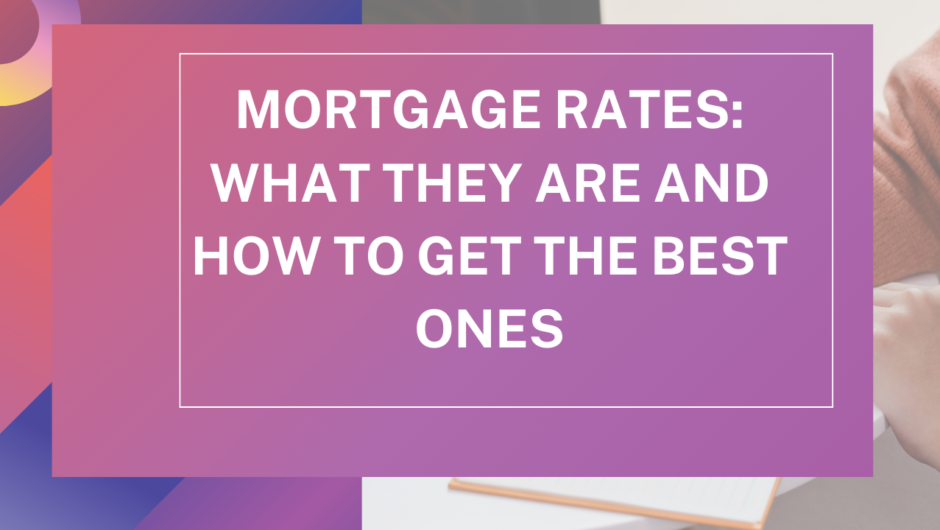Mortgage pre-approval is the process of applying for a mortgage before you start house hunting. It involves providing financial information to a lender who will then determine how much you can borrow and at what interest rate. Pre-approval is important because it can give you a competitive edge when making an offer on a home and helps you determine how much you can afford to borrow.
What is Mortgage Pre-Approval?
Mortgage pre-approval is the process of applying for a mortgage before you start house hunting. It involves providing financial information to a lender who will then determine how much you can borrow and at what interest rate. Pre-approval gives you an idea of what you can afford and can help you determine what price range to shop in when looking for a home.
How Does Mortgage Pre-Approval Work?
The process of mortgage pre-approval typically involves the following steps:
Submitting an application: You will need to fill out an application and provide information about your income, assets, debts, and employment history.
- Credit check: The lender will review your credit report to assess your creditworthiness and determine if you meet their lending criteria.
- Verification of income and assets: The lender will request documentation to verify your income, such as pay stubs, W-2s, and tax returns. They will also verify your assets, such as bank statements and investment accounts.
- Loan pre-approval: Once the lender has reviewed your application and documentation, they will determine how much you can borrow and at what interest rate. They will provide you with a pre-approval letter, which you can use to show sellers that you are a serious buyer and can afford to purchase a home within a certain price range.
It’s important to note that pre-approval is not a guarantee of a loan. Once you find a home you want to purchase, you will still need to go through the formal loan approval process, which involves a more detailed review of your finances and the property you are purchasing.
Why is Mortgage Pre-Approval Important?
Mortgage pre-approval is important for several reasons:
- Helps you determine your budget: Pre-approval gives you an idea of how much you can afford to borrow and what price range to shop in when looking for a home.
- Gives you a competitive edge: Having pre-approval shows sellers that you are a serious buyer and can afford to purchase a home within a certain price range. This can give you a competitive edge when making an offer on a home.
- Saves time: Pre-approval can save you time by helping you narrow your search to homes that fit within your budget.
- Helps you plan ahead: With pre-approval, you can plan ahead and make informed decisions about your home purchase.
- Locks in your interest rate: Some lenders may offer to lock in your interest rate for a period of time, which can protect you from rate increases while you are shopping for a home.
Overall, mortgage pre-approval can make the home buying process smoother and more efficient, and can give you peace of mind as you make one of the biggest financial decisions of your life.
Benefits of Mortgage Pre-Approval
Some of the key benefits of mortgage pre-approval include:
- Provides clarity on your budget: Pre-approval gives you an accurate estimate of how much you can afford to borrow, which can help you set realistic expectations and narrow your search to homes within your budget.
- Gives you a competitive edge: With pre-approval, you can show sellers that you are a serious buyer and have the financial means to purchase a home within a certain price range. This can help you stand out from other buyers who may not have pre-approval.
- Helps you save time: Pre-approval can help you save time by focusing your search on homes that fit within your budget and meet your lending requirements.
- Helps you plan ahead: With pre-approval, you can plan ahead and make informed decisions about your home purchase, such as deciding on a down payment amount and loan term.
- Provides peace of mind: Knowing that you have pre-approval can provide peace of mind as you shop for homes, giving you the confidence to make an offer when you find the right property.
Overall, mortgage pre-approval is a valuable tool for homebuyers, helping them make informed decisions and navigate the home buying process with confidence.
How to Get Pre-Approved for a Mortgage
To get pre-approved for a mortgage, follow these steps:
Check your credit report: Review your credit report for errors and take steps to improve your credit score if necessary.
- Gather financial information: Collect information on your income, employment history, assets, and debts.
- Research lenders: Shop around and compare lenders to find the best fit for your needs.
- Fill out an application: Fill out a mortgage pre-approval application with your chosen lender. This can typically be done online, over the phone, or in person.
- Provide documentation: Submit documentation to support your application, such as pay stubs, tax returns, bank statements, and proof of employment.
- Wait for the pre-approval decision: The lender will review your application and documentation and make a decision on how much you can borrow and at what interest rate.
- Receive pre-approval letter: If you are pre-approved, you will receive a pre-approval letter outlining the loan amount, interest rate, and any conditions of the pre-approval.
Common Mistakes to Avoid During Mortgage Pre-Approval
Here are some common mistakes to avoid during mortgage pre-approval:
- Applying for new credit: Avoid applying for new credit, such as a credit card or car loan, during the pre-approval process. This can lower your credit score and affect your ability to qualify for a mortgage.
- Making large purchases: Avoid making large purchases, such as a car or furniture, during the pre-approval process. This can increase your debt-to-income ratio and affect your ability to qualify for a mortgage.
- Changing jobs: Avoid changing jobs during the pre-approval process. Lenders prefer borrowers with a stable employment history, and changing jobs can raise questions about your ability to repay the loan.
- Not being upfront with your lender: Be upfront with your lender about your financial situation and any potential issues. Hiding information or being less than honest can jeopardize your pre-approval and your chances of getting a loan.
- Not shopping around: Don’t settle for the first lender you find. Shop around and compare rates and terms from different lenders to find the best deal.
- Not understanding the terms of the pre-approval: Make sure you understand the terms of the pre-approval, including the loan amount, interest rate, and any conditions or contingencies.
This can help you avoid surprises or disappointments later on in the home buying process.
By avoiding these common mistakes, you can increase your chances of getting pre-approved for a mortgage and successfully navigating the home buying process.
Conclusion
Mortgage pre-approval is an important step in the home buying process, as it can provide you with a clear understanding of your budget and help you stand out to sellers as a serious buyer. To get pre-approved for a mortgage, it’s important to gather your financial information, research lenders, fill out an application, and provide supporting documentation. However, it’s also important to avoid common mistakes such as applying for new credit or making large purchases during the pre-approval process. By following these guidelines and working with a reputable lender, you can successfully obtain pre-approval and take the first step towards buying your dream home.
Also Read:
- Conditional Mortgage Approval: Tackling The Common Questions
- Are Home Warranties Worth It?
- Understanding How Pawning Business Works
- 7 Ways To Improve Your Credit As Quickly As Possible

Hello, I am Tanisha Kriplani, graduated in computer science from Delhi University. I am passionate about web content writing and have a strong interest in Data Analytics and Data Engineering.












